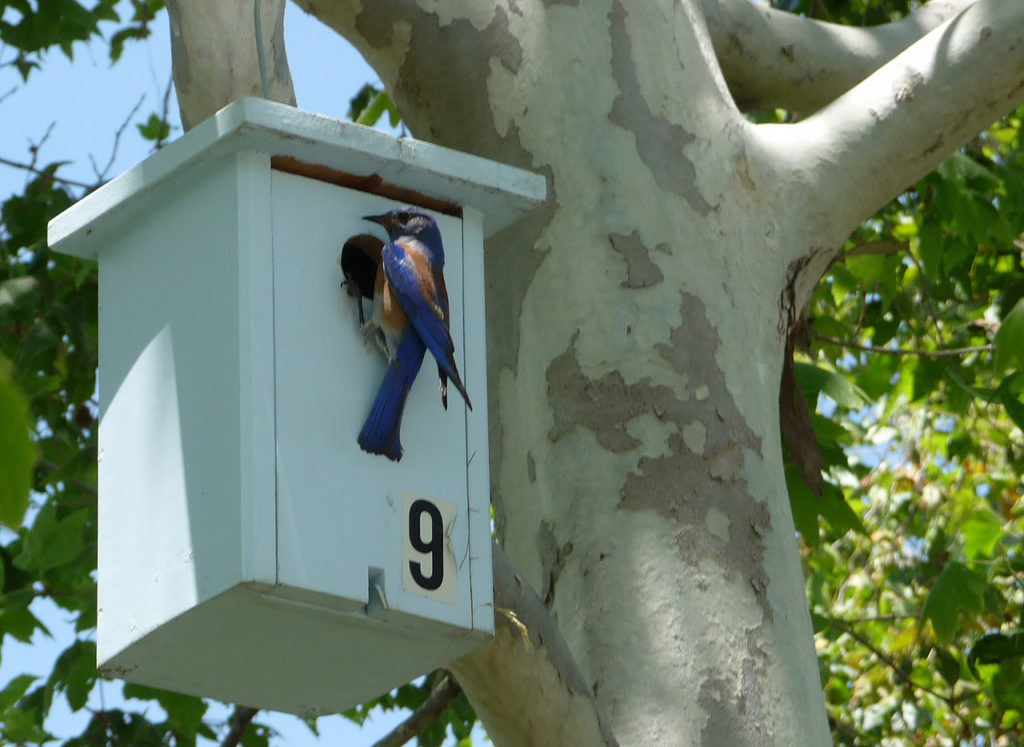Nest Boxes as Substitutes for Dead Trees
Those of us who created the Cavity Conservation Initiative are citizen scientists in Southern California who began our work as nest box monitors, primarily for Western Bluebirds. The steady loss of dead trees particularly in urban and suburban areas, but also in many woodlands and forests, has made it necessary to compensate some cavity nesting birds for the removal of their natural nesting habitat.
While helping to restore populations of the Eastern, Western and Mountain Bluebird, nest boxes have had many other benefits. By regularly checking boxes during the nesting season, and by controlling the size of the nest hole entrance, monitors have limited predation by two non-native species, the European Starling and the House Sparrow. In some cases nest boxes have been used for research. Since many hang in back yards and places accessible to the public, an additional advantage is that they have encouraged more people to take an interest in birds.
The overall success of nest boxes and restoration of bluebirds over the past twenty years now begs the question, is it time to review our goals? If box numbers are uncontrolled, so is the dependency of birds on people and artificial cavities. The Purple Martin and the Wood Duck are a long-standing examples. Bluebirds are a growing one. Is it time to face the question honestly; is our love of a beautiful bird justifiable reason to continue increasing its historic population size and range? What possible impacts might this have? Could we increase competition with other birds for territories and other resources? Some scientific findings suggest that under some conditions, nest boxes do indeed impact open-nesters and may impact bluebird biology and fitness.
These unknowns prod us to favor a more balanced, widely beneficial and sustainable solution. Because nest boxes are a sad substitute for the ecological value of dead trees and because not all cavity-nesting birds will accept them, it is our position that a greater emphasis on dead tree retention is a responsible course. It is likely that nest boxes will remain necessary to support specific populations due to the continued removal of dead trees in developed landscapes, but also to curtail the impact of the non-native European Starling and House Sparrow in some locations.



Connect
Connect with us on the following social media platforms.